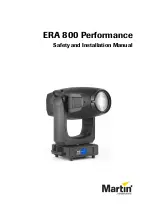
20
Section 4: Theory of Operation
General
The Dripmaster is a gravity-based oil lubrication system.
The common needle valve fed from an oil tank does not provide any regulation of the drip rate—the
rate varies in response to variations in temperature (day versus night and time of year) and changes
in the tank oil level (hydrostatic pressure). Another cause of rate fluctuation is temporary valve
blockage.
The Dripmaster performs as an automatic needle valve that regulates oil flow (Figure 9).
200
180
160
140
120
100
80
60
40
20
0
200
180
160
140
120
100
80
60
40
20
0
0
2
4
6
8
10
12
0
2
4
6
8
10
12
Drops per minute
Drops per minute
Elapsed time
(hou
rs
)
Ela
psed
time (hour
s)
Needle Valve Dripper
Dripmaster
Figure 9: Common Needle Valve compared to Dripmaster
The components that make this possible are described below.
The servo motor regulates the needle valve aperture according to the preset drip rate value. A
photoelectric sensor detects the drips and reports the drip count to the control circuitry. The control
circuitry sets the mode of operation and generates the alarms and drip count information to the
SCADA interface.
The Dripmaster EDD-4SH incorporates a specially-designed needle valve connected to a servo
motor which automatically compensates for rate fluctuations. The compensation magnitude is
defined by the control circuitry. For example, if the drip rate set point is 20 drips/minute, and the drip
rate drops below that level for any reason, the servo motor that attaches to the needle valve opens
it to increase the drip rate to maintain 20 drips/minute. Conversely, if the drip rate exceeds the set
point, the servo motor closes the needle valve to maintain the set point value (Figure 10).












































